International Journal of Engineering Research and Reviews ISSN 2348-697X (Online)
Vol. 10, Issue 1, pp: (14-30), Month: January - March 2022, Available at: www.researchpublish.com

International Journal of Engineering Research and Reviews ISSN 2348-697X (Online)
Vol. 10, Issue 1, pp: (14-30), Month: January - March 2022, Available at: www.researchpublish.com
Abstract: The current energy transition is targeted at achieving net zero emissions by the mid of this century, and the major pathway is to transit from fossil fuel to renewable energy sources. This has posed an existential threat to the fossil fuel industry, especially the oil and gas industry, which has a direct impact on the petroleum engineering disciple in tertiary institutions. The paper therefore reviewed the implication of this transition, and the roles of the petroleum industry, and the petroleum engineering disciple to stay relevant and become adaptable to the current transition. The paper noted that oil and gas will be needed in the energy mix, though in a declining trend as renewable technologies mature. Regardless, the petrochemical industry, which is part of the oil and gas value chain, will survive the current energy transition beyond the 21st century. Also, there are clear adaptable skills, and technologies such as geothermal wells, carbon capture and storage that can enhance the petroleum industry during the transition period. The industry and the petroleum engineering curricular must also adopt innovative technologies such as artificial intelligence, internet of things, and drones to augment the operations under a constantly evolving digital ecosystem. Petroleum Engineers must also expand their curricular to include SDGs, and ESGs, and apply their reservoir and petroleum economics skills into investment banking modules to be able to support the sourcing of funds for the oil and gas industry.
Keywords: Energy Transition, Fossil Fuel, Artificial Intelligence, Net Zero Emissions, Renewable Energy Sources, SDGs, ESGs, Internet of Things.
Petroleum and its semi-solid cousin, bitumen (asphalt), have been used for waterproofing, construction, and lighting purposes spanning back to ancient civilizations, where they were first discovered in the form of natural seepages found in Italy, China, Egypt (Gebel Zeit), Cuba, and the Dead Sea. Baku, in present-day Azerbaijan, long before its modern-day discovery. Similarly, natural gas deposits were recorded by early societies in ancient India, Greece, Persia, northern Iraq, and China. (US Library of Congress). Though the first recorded oil well was drilled in 1857 in the town of La Brea, Trinidad to a depth of 280ft by the American Merrimac Company, modern history of the oil and gas industry however, started in 1847, when Scottish chemist James Young, discovered natural petroleum seepage in the Riddings coal mine, and from this seepage distilled both a light thin oil suitable for lamps and a thicker oil suitable for lubrication. Shortly after the first oil well in 1857, the first commercial oil well was drilled by Edwin Drake in Titusville, Pennsylvania in 1859, and this discovery led to the Pennsylvania „oil rush‟, making oil one of the most valuable commodities in America. (Ali, 2019). However, the industrialization of the oil and gas sector came only in the later 19th century, first as a raw material to produce lightening oil and lubricants, and then, at the turn of the 20th century, as a powerful source of energy that overtook coal as the dominant energy source that revolutionized the global economy. (Macini & Mesini ()). The petroleum industry presently contributes almost 60% of the current global energy mix. The growing relevance of this “black gold” also brought with it, innovative technology to enhance the finding and production of the hydrocarbon in commercial quantities. Consequently, professional petroleum geologists, came into the area as early as 1897 in California, 1900 on the Gulf Coast, 1910, in Mexico and around 1913 in Oklahoma, who pioneered the application of chemical, physical and geological principles to the problems of petroleum discovery and production. Though not schooled in the
International Journal of Engineering Research and Reviews ISSN 2348-697X (Online)
Vol. 10, Issue 1, pp: (14-30), Month: January - March 2022, Available at: www.researchpublish.com
formal petroleum engineering skills, they all worked through self-help to pioneer an industry that will eventually dominate the global energy system. One of such pioneers, John Franklin Carll, often called the “father of petroleum engineering”, and his compatriots, met necessity with invention, and drew on their diverse backgrounds in a dozen or more disciplines to establish the range of applicable fundamentals and develop the code of practice that eventually gave birth to formal petroleum engineering studies. (Uhi,1965) The rapid growth of the industry in the early 1900‟s, naturally attracted more formally trained men in the growing oil industry, which inevitably triggered universities and schools of mines to consider organizing programs of study in petroleum technology. This eventually led to the pioneering role of University of Pittsburgh to introduce the first petroleum engineering studies in 1910 with the seven courses in oil and gas geology and technology and law. The first petroleum engineering degrees were finally awarded in 1915 (Uhi, 1965). In the case of Nigeria, the first Petroleum Engineering course was established in 1972 as a Department in the Faculty of Technology in University of Ibadan. The Department was created to assist the Nigerian Government achieve industrialization and self-reliance in the oil industry by training and producing of Petroleum Engineering Graduates with excellent academic standards and adequate competence to tackle the problems of the industry. This was 16 years after the first commercial oil discovery in 1956 in Oloibiri, now Bayelsa State by Shell D‟Arcy (later Shell–British Petroleum,) after several unsuccessful exploration attempts which began in 1908 with the Nigerian Bitumen Corporation in 1908 with Tar Sand deposit prospecting in the South-Western. The University of Benin followed closely in 1973/74 with the establishment of the Department of Chemical and Petroleum Engineering, while University of Port Harcourt hosted the next Petroleum Engineering Department in 1979, which has since been upgraded to Petroleum and Gas Engineering Department, the Host of this Programme.
With Nigeria‟s increasing dependency on oil and gas revenues, coupled with increasing student population, other Universities began to join the enviable league of Petroleum Engineering Studies as shown in table 1. This list is expected to increase in the years to come. (Dibiamaka et al (2019).
Table 1: List of Universities Offering Petroleum Engineering Course in Nigeria
Petroleum engineering, as a field of study, is a branch of engineering that focuses on processes that allow the development and exploitation of crude oil and natural gas fields as well as the technical analysis, computer modeling, and forecasting of their future production performance. The discipline which evolved from mining engineering and geology, has remained closely linked to geoscience, that helps the petroleum engineers to understand the geological structures and conditions favorable for petroleum deposits. The petroleum engineer, is therefore saddled with the responsibilities of extracting gaseous and liquid hydrocarbon products from the earth, through the process of drilling, production, processing, and transporting of these products while handling all the related economic and regulatory considerations. The engineer is also expected to develop specialization in such areas as mechanical, civil, electrical, geological, geophysical, and chemical engineering to support the core petroleum engineering subjects of drilling, production, reservoir engineering, formation evaluation, and processing and transporting of produced hydrocarbon. The unique role of the petroleum engineer therefore is to integrate all the specializations into an efficient system of oil and gas drilling, production, and processing (Honeycutt and McLeroy, 2018).
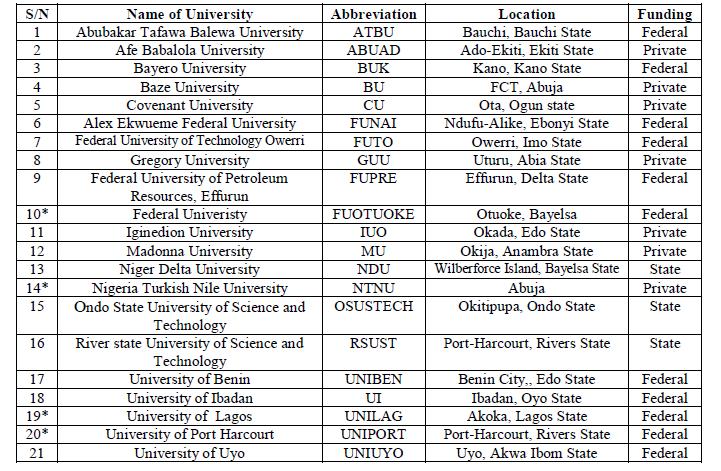
International Journal of Engineering Research and Reviews ISSN 2348-697X (Online)
Vol. 10, Issue 1, pp: (14-30), Month: January - March 2022, Available at: www.researchpublish.com
At first, petroleum engineering focused heavily on the upstream activities of drilling and completions. The pioneers of petroleum engineering dealt mainly with issues such as pressure controls and rig operations. Around the same time well pumping began, while scholars began to study and optimize production via artificial lift and the use of packers and chokes. Abundant discoveries in the 1930s shifted the focus from individual wells to fieldwide development, giving rise to the reservoir engineering branch and studies of optimal well spacing. Petrophysics, the study of fluid and rock behavior entered the scene around the same time, and eventually provided electrical logging technologies as a means for oil and water saturation estimation in reservoir rocks. (Michael 2018). The oil and gas industry since its inception, has thus been one of continuous challenges, matched by adaption and innovation. Many of the world‟s largest private oil companies started their business in refining oil products, and then gradually moved into exploration and production as they attempted to diversify their activities and reduce their exposure to volatility of supplies and prices. The industry has thus enjoyed and welcome innovation and technological advances that have also shaped and re-shaped every stage of the industry, from exploration to the final consumer (Nakhle, 2018). Such technological innovation includes the early invention of roller cone bit in 1909, to the introduction of more advanced Polycrystalline diamond compact (PDC) drill bit in 1972. Submersible drilling rig and Coil Tubing Unit were introduced in 1962, while the first logging system combining gamma ray spontaneous potential, induction spherically focused resistivity, sonic and caliper logs was first introduced by Schlumberger, in 1971. Shortly after, Teleco introduced Measurement-While-Drilling (MWD) technology in 1978, and in 1983, Halliburton came out with Logging While Drilling tool (LWD). The first Tubing Conveyed Perforating (TCP) services was introduced by Atlas Wireline Services in 1982, while Schlumberger again introduced the highly integrated "triple combo" logging platform in 1995. In terms of well completion, Baker Oil Tools earlier introduced the first multilateral completion System introduced in 1994, while the first intelligent wells with built-in remote monitoring and control was completed at Snorre field, Norway in 1997. The industry witnessed the first autonomous offshore robot deployed on a fully operational oil and gas installation by TU Darmstadt in 2011, while the first remote-activated deepwater completion system for interventionless operation was introduced by Weatherford and TR1P in 2019. Finally, the Industry‟s first 3D logging-while-drilling technology was also introduced in 2019 by Halliburton. (SPE, 2021).
The search for oil in Nigeria started about 1908 when the Nigerian Bitumen Co. & British Colonial Petroleum commenced operations around Okitipupa which was truncated because of the first world war. Thereafter D'Arcy Exploration Company and Whitehall Petroleum attempted some exploration works but due to lack of commercial discovery, both companies surrendered their licences in 1923. (www.nnpcgroup.com). The next exploration efforts which started in 1937 came with Shell D'arcy Petroleum Development Company of Nigeria, which was a consortium of Shell and British Petroleum, which later became Shell-BP. However, this second effort was suspended in 1941 due to World War II, and resumed activities after the war, to drill the first deep exploration well in 1951 at Ihuo, 16 kilometres northeast of Owerri, at a depth of 11, 228 feet, but no oil discovery. A second well, the Akata well drilled in 1953 found oil but not in commercial quantity and was thus plugged and abandoned 1954. (Akanmidu, 2015). Nigeria found its first commercial oil well when Shell BP drilled Oloibiri well-1, now Bayelsa State, in 1956, (Ite, A.E etal,), and then exported its first 5100 bbls in 1958, making Nigeria an oil producing country. The company then became the sole concessionaire of the entire Nigeria. (www. nnpcgroup). Several other multinational companies followed the scene such as Mobil, ElfSafrap, Agip, and Texaco, Gulf Oil, Phillip Oil, thus making oil exploration and production an entirely multinational affair (KMPG, 2014). With more exploration works, Nigeria daily production output output grew to more than 2 million barrels in the early seventies. With this success, the government in the 1990s introduced the Indigenous participation programme with the issuance of eleven licences in 1991 and an additional 17 licences by 1997. However, the first Indigenous company Dubri Oil was assigned Gele Gele oil field in 1987, which was discovered in 1967 by Phillips Petroleum Company. (www.dubri.com). The Marginal Field Rounds came in in 2003 when the Federal Government awarded 24 Marginal fields awarded to 31 indigenous companies (EBOH, M. 2016). A second marginal fields bid round was conducted in 2020 with a total of 57 fields. The Federal Government had to set up the Department of Petroleum Resources (DPR) Inspectorate in 1970 for proper regulation and management of the industry, before it joined the Organization of the Petroleum Exporting Countries (OPEC)in 1971. The National oil company, Nigerian National Oil Corporation (NNOC) was also created in 1971 which later became the Nigerian National Petroleum Corporation (NNPC) in 1977. (Anyanechi et al 2021). In continuation of enhancing the performance of the oil and gas industry, and to also promote investment in the sector, the President signed Petroleum Industry Bill (PIB) into Law in July 2021 to become the
International Journal of Engineering Research and Reviews ISSN 2348-697X (Online)
Vol. 10, Issue 1, pp: (14-30), Month: January - March 2022, Available at: www.researchpublish.com
Petroleum Industry Act, 2021. The key objective of the Act is to provide legal, governance, regulatory and fiscal framework for the Nigerian petroleum industry, the development of host communities and related matters. The legislation repealed the NNPC Act and made it NNPC Limited, a commercially oriented and profit driven national petroleum company independent of the government and audited annually. The Act also scrapped the Department of Petroleum Resources (DPR) and replaced it with two new regulators, the Upstream Regulatory Commission, and the Midstream / Downstream Regulatory Authority. It also empowered the the Minister of Petroleum Resources to award leases and granting approval on assignment of interest on the recommendation of the Commission. There is also the frontier exploration fund which is 30% of NNPC Limited's profit oil and gas, the Midstream and Downstream Gas Infrastructure Fund (0.5% of wholesale price of petroleum products and natural gas sold in Nigeria), the Decommissioning / Abandonment Fund and the Host Community Fund (3% of operating expenditure incurred in prior year). (Ajayi et al 2021). In terms of production and reserves capacity, Nigeria currently holds about 36.91billion barrels of crude oil and 206.53 trillion cubic feet of gas as reserves according to the Department of Petroleum Resources, DPR, which translates to 15% of Africa‟s oil reserves and 16% of its gas. (DPR, 2021). According to the DPR, the federal government target is to achieve 40 billion barrels of oil reserves by 2025, and 210 trillion cubic feet (tcf) of gas reserves by 2025 and 220tcf by 2030. The overall plan according to the DPR is to see oil reserves grow to 50 billion barrels in the short to medium term, and also achieve a daily production rate of 4 milliion barrels per day during the same period. (Ugbodaga, 2021). The country present daily production stands at 1.45 million barrels per day, excluding condensates, as at September 2021 (Vanguard, 2021), while figure 1 shows the historical oil production with average production of about 1.88m barrels of crude oil a day between 1973 and 2020 – reaching an all-time high of 2.5m barrels per day in November, 2005. The production has since hovered around 2 – 1.5 million barrels per day, due to several reasons, from the delay in passing the petroleum industry bill, to militancy in the Niger Delta region, and of recent restriction imposed by OPEC because of COVID-19.
Figure 1: Nigerian historical daily crude oil production. In terms of gas production, Nigeria‟s daily average production is between 640-800 billion cubic feet , bcf of gas per day. With gas reserve of 206.53 trillion cubic feet, and a potential of 600 trillion cubit feet of gas, Nigeria stands as 6th world gas reserves holder, and given this huge resources, the Federal Government in March 2021, declared 2021- 2030 as the “Decade for Gas” with a view to diversifying and uplifting the economy, and to also make gas as the pivot of the industrialization of the Nigerian economy. The gas economy will leverage on Compressed Natural Gas, CNG, AutoGas and Liquefied Petroleum Gas, LPG, as alternative fuel sources to petrol, especially in the transition and to also curb the menace of fuel subsidy that is eating deep into the purse of the federal government. (Esiedesa, 2021).
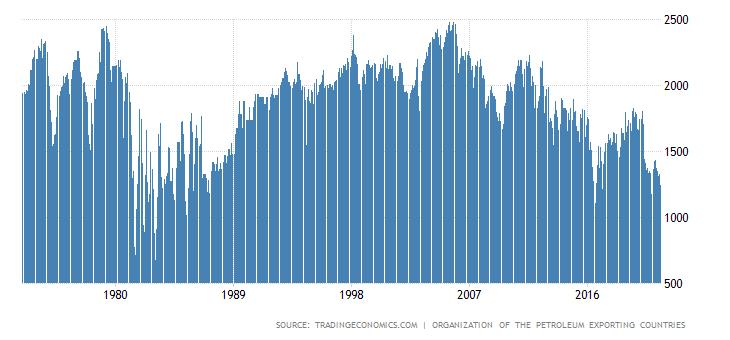
The oil and gas sector has embraced innovation since its beginnings in the 19th century, with increasing response to the digital revolution, as part of its tradition. Powerful new technologies, such as artificial intelligence (AI) and cloud applications, have upgraded or overtaken old ones, opening fresh possibilities, efficiencies, and opportunities barely imaginable a few decades ago. While some voices call for an end to the era of fossil fuels, the reality is that the entire hydrocarbon industry, like many others, is adapting and innovating at a rapid rate. For the next several decades, oil and gas will remain key sources of energy, thanks in part to the sector‟s investments in technology. In the face of lower prices, severe cost pressures and the need to adhere to the highest environmental and climatic standards, the oil and gas industry will continue to deploy new technologies that will ensure it has a strong future. Figure 2 shows the suites of technology frontiers that will sustain the industry in the years to come
International Journal of Engineering Research and Reviews ISSN 2348-697X (Online) Vol. 10, Issue 1, pp: (14-30), Month: January - March 2022, Available at: www.researchpublish.com
Figure 2: New technological frontiers in the oil and gas industry. Source: Nahkle, 2018.
This period of digital transformation has made data to become a new asset for operators and contractors, comparable to the values of leases, rigs, and personnel. Acting as a toolbox for visualizing, understanding, and manipulating “big data,” the digital sciences allow engineers to efficiently resolve issues, indiscernible by conventional approaches. The volume, velocity, variety, veracity, and value of data is continuously increasing, pushing for the invention of a new skillset among engineers in learning and being adept to these new digital tools. The Oil and Gas Industry is therefore not a stranger to Big Data, as the industry generates a huge quantity of data from 3D seismic surveys, to drilling data, production data or the monitoring of production facilities (pressures, flow rates, temperatures etc.). Our ability to generate, collect and store this data has continually increased, but this has brought with it problems with managing and analyzing such vast quantities of information. Analysis of such data has been a major area of focus and innovation in the last five years within the oil and gas industry (as well as many other industries) with a view to potential improvements in exploration and production efficiency and safety. (Baker, 2019).
This is the whole essence of the present Fourth Industrial Revolution, also known as INDUSTRY 4.0 as shown in figure 3

Figure 3: Industry 4.0 – Digital Transformation of Manufacturing in The Fourth Industrial Revolution. Source: iSCOOP, 2021
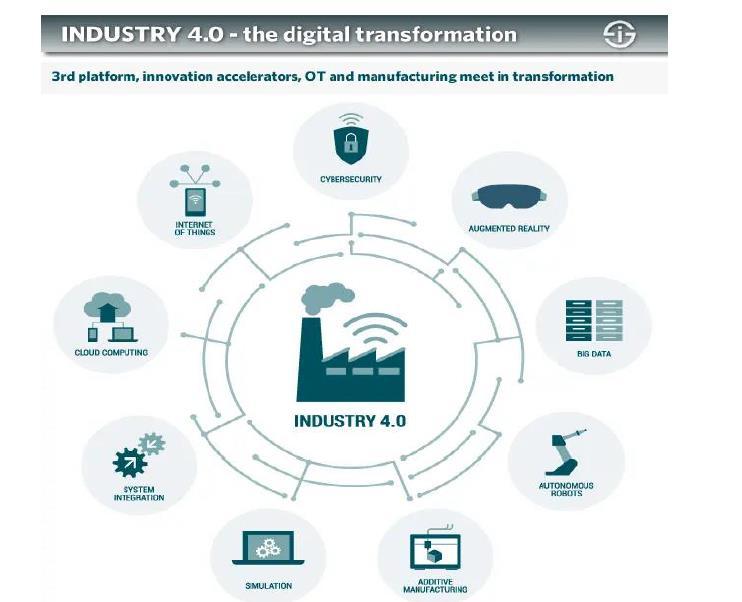
Industry 4.0 is the digital transformation of manufacturing/production and related industries and value creation processes It is used interchangeably with the fourth industrial revolution and represents a new stage in the organization and control
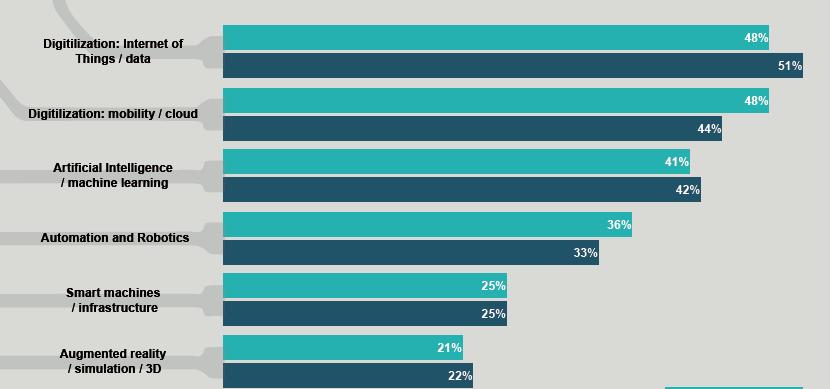
International Journal of Engineering Research and Reviews ISSN 2348-697X (Online)
Vol. 10, Issue 1, pp: (14-30), Month: January - March 2022, Available at: www.researchpublish.com
of the industrial value chain. It represents the current trend of automation and data exchange in manufacturing technologies, including cyber-physical systems, the Internet of things, cloud computing and cognitive computing and creating the smart factory. Industry 4.0 is therefore characterized by, among others, 1) even more automation than in the third industrial revolution, 2) the bridging of the physical and digital world through cyber-physical systems, enabled by Industrial IoT, 3) a shift from a central industrial control system to one where smart products define the production steps, 4) closed-loop data models and control systems and 4) personalization/customization of products. The Fourth Industrial Revolution or Industry 4.0 is distinct from the first three Industrial Revolutions as shown in figure 4
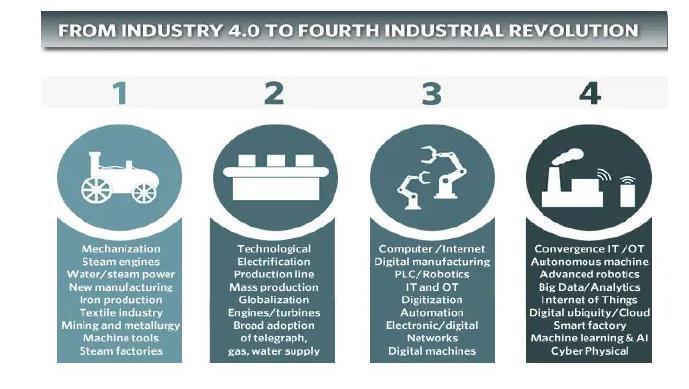
Figure 4: The distinct concept of the 4 different Industrial Revolutions. Source: i-SCOOP,21
The application of digitization and cloud computing, also known as the “Fourth Industrial Revolution” in the oil and gas industry is often viewed as an evolution of a new discipline. Nevertheless, the impact of this “evolution” is so broad and multifaceted that it has revolutionized almost all sublets of petroleum engineering, expanding each to new fronts. While the problems petroleum engineers are facing remain fundamentally of the same nature (drilling, completions, facilitiesrelated problems, etc.), the solutions in their arsenal have expanded. Some of the features of the digitalization include Machine learning (ML), Artificial Intelligence (AI), Extended Reality, and Drones are quintessential examples of tools engineers can use to comprehend acquired data and its trends.
Machine learning is an application of AI that includes algorithms that parse data, learn from that data, and then apply the lesson to make informed decisions. In machine learning (ML) a known data set is assigned as a teaching set with a computer performing a regression analysis to recognize the mathematical functional relationship between the variables. As more data are gathered, the trends exhibited by the aggregate data become clearer and more accurate. These trends are then identified and interpreted by subject matter experts (SMEs) whose call is to make intelligent decisions. (Michael et al, 2020). Machine learning (ML) focuses on building systems that learn or improve performance based on the data they consume. In general, two types of machine learning algorithms are used today, which are, the supervised learning and the unsupervised learning. The Supervised machine learning algorithms are the most used, where a data scientist acts as a guide and teaches the algorithm what conclusions it should make. The algorithm is trained by a dataset that is already labeled and has a predefined output. In unsupervised machine learning, the model uses a more independent approach, in which a computer learns to identify complex processes and patterns without a human providing close, constant guidance. Unsupervised machine learning involves training based on data that does not have labels or a specific, defined output. (Oracle, 2021).
Artificial intelligence (AI) is therefore a term used to cover a wide variety of technological improvements and applications that involve machines „learning‟ or „problem solving‟, such as self-driving cars, understanding human speech (e.g. Apple‟s Siri or Amazon‟s Alexa) or competing in strategy games (e.g. chess). The potential applications for artificial intelligence and automation in the oil and gas industry are vast, from surveying and continuous monitoring, to planning and forecasting and improving safety. High risk environments such as an offshore rig or production facility can benefit from the use of both autonomous robotics and autonomous system monitoring to replace human presence in such high-
International Journal of Engineering Research and Reviews ISSN 2348-697X (Online)
Vol. 10, Issue 1, pp: (14-30), Month: January - March 2022, Available at: www.researchpublish.com
risk locations. The majors are certainly leading the way in research and development of AI technology and automation, and with the potential safety advantages, not to mention cost savings due to increases in efficiency, we are sure to see a huge amount of investment and progress in this area in the next decade. Given the volume of data generated by the industry, several aspects of the industry can deploy ML Algorithm to enhance decision models at the push of the button. (Baker, 2019)
Another core digital tool is the Internet of Things or „IoT‟ which describes the extension of internet connectivity between physical devices and everyday objects. Embedded with electronics, internet connectivity and other forms of hardware such as sensors, can communicate and interact over the internet where they can also be remotely controlled and monitored. Within the oil and gas industry, IoT devices and sensors can provide real time data on machinery, pipes, storage, transportation and employee safety, for example. For example, by integrating the IoT into offshore equipment, employees can track and monitor equipment lifespan and other elements that can affect production, such as wave heights, temperature, and humidity. By applying this knowledge, companies can effectively maintain an offshore platform through predictive maintenance, helping detect equipment breakdown before it occurs. This leads not only to enhanced productivity with less downtime but also results in an improvement to the bottom line. In addition, this has the advantage of removing the need for physical presence and inspection in unsafe offshore environments. Oil production captured in real time through embedded sensors linked to automated data communications systems can enable companies to collect information from assets anywhere and make informed operational decisions. For example, companies may be able to adapt real time drilling strategy and decisions based on comparisons of real time downhole drilling data and production data from nearby wells. According to Bain & Company, this type of data collection and integration has the potential to improve production by 6-8%. (Baker 2019)
The use of drone technology has also demonstrated huge benefits in terms of monitoring and inspection of both inaccessible and/or dangerous oil and gas facilities. With the use of drones, visual inspections of such facilities can be carried out remotely, with high quality images fed back in real time to drone operators. Multiple facilities can be inspected within a matter of hours rather than potentially days if inspections are carried out in person. This type of drone inspection can then identify genuine issues and problems and direct teams to deal with them immediately, improving efficiency by focusing on those facilities that require immediate attention. Another example is the inspection / maintenance of flares offshore. Difficult to reach and dangerous, this type of physical inspection can require production shutdown before it can take place, but with drone technology this inspection can be conducted at any time, saving costs and increasing safety.
In another application, drones can capture amazing images of rock outcrops, which, when combined with other technologies such as mobile mapping (helicopter) and laser scanning (LiDAR) data, can be georeferenced and processed to generate virtual outcrop models which can act as a very useful classroom learning aid. In addition, if data can be obtained from the outcrop via physical inspection these virtual models can be taken a step further where an accurate, high resolution 3D digital model of the outcrop can be generated which can be visualised and interrogated by the user. Some possibilities of data and visualization from such models includes the extraction of 3D lines which can demonstrate clinoforms, channel bodies and sedimentary structure, fracture and fault geometry and facies boundaries. Additional information such as porosity, permeability and net to gross can be combined with information on the thickness and width of sedimentary features to create a powerful, interactive, learning resource that can be used to supplement more traditional classroom and field-based training courses. (Baker, 2019).
Extended Reality (XR), is an umbrella term used to describe immersive technologies that can merge the physical and virtual worlds, such that the user might be able to shop for a new home anywhere in the world as though actually on-site It has been estimated that by 2022, the XR market will reach some $209 billion, which is about eight times what it is today. There are three known forms of XR; Augmented Reality (AR), Virtual Reality (VR), and Mixed Reality (MR) In augmented reality, virtual information and objects are overlaid on the real world, which enhances the real world with digital details such as images, text, and animation. A special AR glasses or via screens, tablets, and smartphones are used to have this experience in order to make users share both the real and virtual world, such that they can still interact and see what‟s going on in front of them. In Virtual Reality (VR) users are fully immersed in a simulated digital environment using a VR headset or head-mounted display to get a 360 -degree view of an artificial world. In Mixed reality (MR), the
International Journal of Engineering Research and Reviews ISSN 2348-697X (Online)
Vol. 10, Issue 1, pp: (14-30), Month: January - March 2022, Available at: www.researchpublish.com
digital and real-world objects co-exist and can interact with one another in real-time. This is the latest immersive technology and is sometimes referred to as hybrid reality. It requires an MR headset and a lot more processing power than VR or AR. An example is Microsoft's HoloLens that allows user to place digital objects in front of the user to give the user the ability to spin it around or interact with the digital object in any way possible. (Marr, 2019). Figures 5 shows examples of Virtual Reality applications in the oil and gas industry.
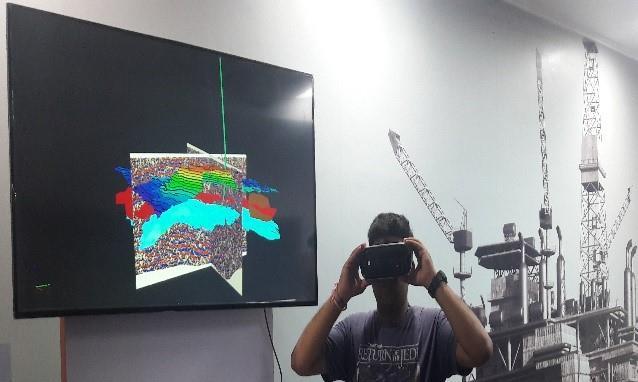
AR can be used by field engineers who are responsible for maintenance and operations of machines like pumps, motors, compressors on oil rigs to extract real time information about the performance and operations of the machines in front of them. With AR informative graphics, real time information can be viewed over a mobile phone of glasses, with audio AR can also be deployed in ensuring comprehensive rig monitoring to reasonably predict failure points and provide a platform to track rig operations. It will help in creating real time dashboard to report, schedule and predict maintenance actives and provide necessary insights for smooth operations. On the other hand, Virtual Reality application for oil & gas comes in a 3D immersive technology application that will take the sub-surface earth model and plug it onto headgear for enhanced visual experience on-the-move. It is an application to view the reservoir, wells, geological formation, Seismic traces etc. The comprehensive static earth model containing 3D seismic data, structural data such as zones and layers, planned well deviation surveys, logs, reservoir data, faults and horizons are loaded to the VR gear Once loaded on headgear, the subsurface data will be available to field users on drill site such as drilling engineers, supervisors, well site geologists, production and reservoir engineers, to enhance decision-making during critical drilling operations. (Ranganathan, 2017)
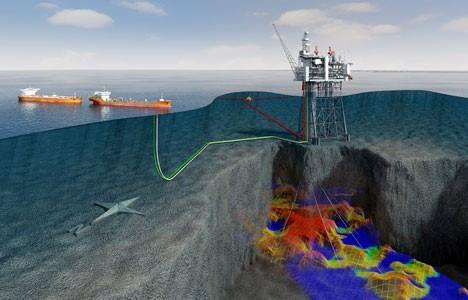
Energy, undeniably, has become the pillar upon which the entire world and its economic and natural system thrives. Energy, undoubtably will remain the corner stone of human development, and according to the World Economic Forum Insight Report, 2018, energy since recorded human history, continues to experience unprecedented transformation driven mostly by energy security, changing needs and consumption pattern, technological innovation, geopolitical dynamics and environmental implications, demand, and supply dynamics, and of course government policy directions. This constant transformation is what is now known as Energy Transition from one form of energy to another. Citing the work of O‟Connor (2010), Sovacool,2017, recapped the definition of energy transition as „a particularly significant set of changes to the patterns of energy use in a society, potentially affecting resources, carriers, converters, and services‟. There are two schools of thoughts regarding Energy Transition; One group viewed energy transition as an inclusive system that involves not only the national sources of energy supply and their compositional changes, but also as involving different things such as the use of fuels, services, and end-use devices that have occurred quite quickly, within a few years. The second group however holds that sustainable energy transition generally takes much longer time, far beyond a decade, as to them, energy transitions are prolonged affairs that take decades to accomplish, and the greater the scale of prevailing uses and conversions, the longer the substitutions will take. They viewed that fast transition only occurs as anomalies and mostly in countries with small populations or under unique circumstances that can hardly be replicated elsewhere. (Sovacool,2017) The current energy transition is thus driven mainly by the desire to arrest the devastating effect of greenhouse gas effects on the climate and the environment by moving away from fossil fuel or non-renewable energy sources to much cleaner renewable energy sources. According to the Intergovernmental Panel on Climate Change (IPCC), the United Nations
International Journal of Engineering Research and Reviews ISSN 2348-697X (Online)
Vol. 10, Issue 1, pp: (14-30), Month: January - March 2022, Available at: www.researchpublish.com
body for assessing the science related to climate change, 25% of C02 emissions come from electricity and heat production, while a further 24% come from agriculture, forestry, and other land use. Industry accounts for 21%, and transportation 14%, and a whopping 60% of global greenhouse gas emissions are from fossil fuels, through the emission of greenhouse gas into the atmosphere that is slowly causing the global temperature to rise above pre-industrial levels. This has caused and is still causing devastating effects on nature and humans such as rising sea levels, and extreme weather events like floods, droughts, and brushfires, and of course, debilitating health consequences, food insecurity, human migration from devastated environment to political consequences and civil unrest as witnessed in Nigeria between the cattle herdsmen and the indigenous farmers in the middle belt states of Benue and Plateau. It was in its attempt to arrest the deterioration that led the Intergovernmental Panel on Climate Change (IPCC) of the United Nations, to issue stern warnings that global warming from pre-industrial levels must not exceed 1.5°C to avoid irreparable damage to the planet. This further led to the coming together of 196 countries in 2015 to pledge to work together to slow global warming by cutting emissions and other steps under a collective Paris Agreement, the world‟s first comprehensive climate change agreement. The main goal of the Paris Agreement is to keep the global average temperature to well below 2 °C above preindustrial levels and to pursue efforts to limit the temperature increase to 1.5 °C.
According to some recent scientific studies known as the “extreme event attribution, that has published more than 350 peer-reviewed scientific studies on extreme weather conditions, the number of extreme events has grown substantially over the past 10-15 years, and that, about 92% of recorded extreme heat around the globe were caused by climatic change. The report cited that climatic change made the heat waves intense that let to about 506 of the 735 fatalities in Paris during the 2003 European heatwave. (Carbon Brief, 2021). The Yale Environment 360, published at the Yale School of the Environment in their October 2020 edition attributed this rapid change in weather conditions in the past 20 years largely to the rising global temperatures. The Report recorded about 7,348 major natural disasters around the world, killing 1.23 million people and resulting in $2.97 trillion in global economic losses from 2000 to 2019. The figures when compared with data from 1980 to 1999 indicated only 4,212 natural disasters, 1.19 million deaths, and causing $1.63 trillion in economic losses. Climate-related disasters also rose by 83 percent from the 1980-1999 level of 3,656 events to 6,681 during 2000-2019. Major floods have more than doubled, the number of severe storms has risen 40 percent, and there have been major increases in droughts, wildfires, and heatwaves. Besides the extreme weather conditions from global warming, the World Health Organization (WHO) also reported additional extremity from air pollution from fossil fuel that kills about 570,000 children under the age of 5 every year, far more than malaria and unsafe drinking water. This figure is part of the estimated 7 million premature deaths linked to air pollution amongst children, elders, the economically poor and even the unborn according to WHO. The WHO also reported that millions of pregnant women deliver premature babies due to air pollutions, with most of these children growing up with lifelong respiratory conditions such as asthma or reduced lung capacity or brain impacts Air pollution also cause cognitive impairment mental health problems, such as anxiety and depression, breast cancer, autism, appendicitis, and the risk of suicide. (Global Catholic Climate Movement, 2017)
In its Global Climate Report, the World Meteorological Organization (WMO) showed that the global average temperature in 2020 reached 1.2-degree Celsius above pre-industrial level, which was now so close to the limit of 1.5degree Celsius limit as advocated by scientists to curtail the worsening climatic problems. According to the report, the world experienced the steepest temperature rise from 2015 as shown in figure 6. (Guterres, 2021). This rising temperature has been the cause of melting of Arctic Sea ice with October 2020 as the lowest ever, this is coupled with apocalyptic fires, floods, droughts, and storms at increasingly pace globally. Generally, the entire global biodiversity is collapsing, with fast encroaching deserts and rising ocean temperature, and unless something is done fast, by cutting back on fossil fuel production by 6 per cent annually for the next decade from 2020 to 2030, the world at risk of attaining a 2% global temperature rise above pre-industrial level. (Guterres, 2020). In the face of these stark realities, the United Nations Secretary General, stressed the need for global coalition of all nations committed towards achieving carbon neutrality by 2050. He also emphasized the need for all nations, cities, financial institutions, and corporate organizations to work towards achieving a net-zero plan that can reduce global emissions by 45 percent by 2030 compared with 2010 levels. The UN Secretary General also demanded that global finance aligns with the Paris Agreement and the Sustainable Development Goals, which to him would put a price on carbon; stop financing fossil and subsidizing fossil fuel. The alignment should also create a carbon tax, which is a shift from income tax from taxpayers to polluters. Guterres, 2020 also asked that companies must be mandated to disclose climate-related financial risk, plus inclusion of carbon neutrality targets in their economic and fiscal decision-making. He also recommended for banks and other financial institutions to pay attention to net zero obligations in their lending, and demand that asset owners and managers must decarbonize their
International Journal of Engineering Research and Reviews ISSN 2348-697X (Online)
Vol. 10, Issue 1, pp: (14-30), Month: January - March 2022, Available at: www.researchpublish.com
portfolios. In his further comments on the net zero emission goals, the UN Secretary General, declared year 2021 as the “Year for Action”, for nations and organizations and agencies to develop concrete plans towards actualizing these goals. He stated that the time is now for countries to submit pragmatic and ambitious new nationally determined contributions (NDCs), with a focused and efficient 10 years climate plans. He reiterated the need for developed economies to phase out coal by 2030 especially in OECD countries, and 2040 in other regions. (Guterres, 2021)
Figure 6: State of the Global Climate in 2020. Source: WMO
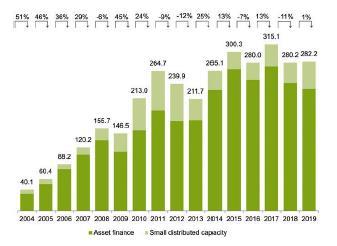
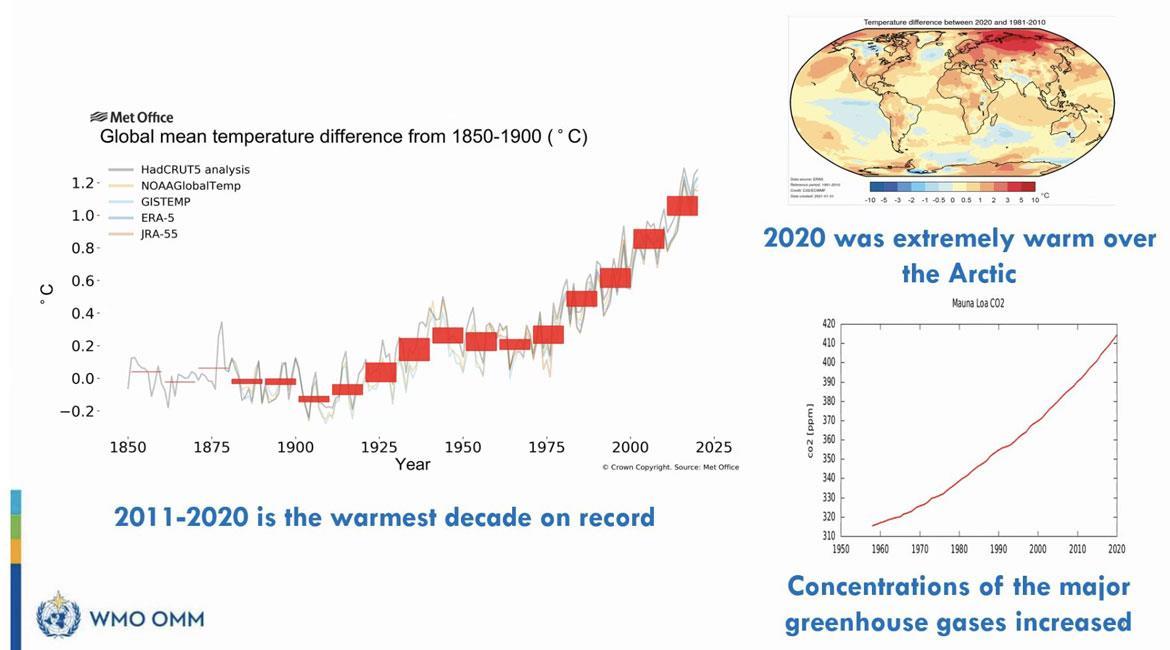
President Joe Biden of the United States also added his voice in a virtual climate meeting on April 23, 2021 with 40 other heads of governments, during which he informed the participants that the United States would cut by half, its greenhouse gas emissions before 2030. As a commitment to this goal, the United States has submitted a new “nationally determined contribution” (NDC) under the Paris Agreement setting an economy-wide emissions target of a 50-52% reduction below 2005 levels by 2030. Other countries such as Japan, also promised to cut its emissions by 46-50% below 2013 levels by 2030; Canada will strengthen its NDC to a 40-45% reduction from 2005 levels by 2030, the United Kingdom will embed in law a 78% GHG reduction below 1990 levels by 2035, while the European Union is preparing a law to reduce net greenhouse gas emissions by at least 55% by 2030 and a net zero target by 2050. Brazil also committed to achieve net zero by 2050 and promised to end illegal deforestation by 2030. President Biden also stressed the need for developed economies to collectively mobilize $100 billion per year in public and private finance to support developing countries to fight the climatic problems and support speedy energy transition. (WhiteHouse, 2021). In the meantime, as part of their contribution to the energy transition, a group of 27 banks out the big 60 global banks have reduced their funding of fossil fuel projects within the same period, with European banks in the forefront. This is to make room for more investments for renewables, and according to a report on Global Trends in Renewable Energy Investment, 2020, by the Frankfurt School of Finance and United Nations Environment Programme (UNEP) Centre, renewables already attracted about $2.7 trillion dollars of investment between 2010 to 2019 with China and the United States leading the pact with a joint expenditure of more than $1.2 trillion. Figure 7 shows the growth of investments in renewables from 2004 to 2019
Figure 7: Global Renewable Energy Capacity Investment, 2004-2019, $bns; Source. Frankfurt School of Finance and UNEP Centre, 2020
International Journal of Engineering Research and Reviews ISSN 2348-697X (Online)
Vol. 10, Issue 1, pp: (14-30), Month: January - March 2022, Available at: www.researchpublish.com
IRENA,2020, stated that the world would require drastic reduction in fossil fuel demand and usage by 70% for oil, 41% for gas and 87% for coal compared to 2016 levels by 2050, if it must resolve the present climatic trajectory. This is shown in figure 8.
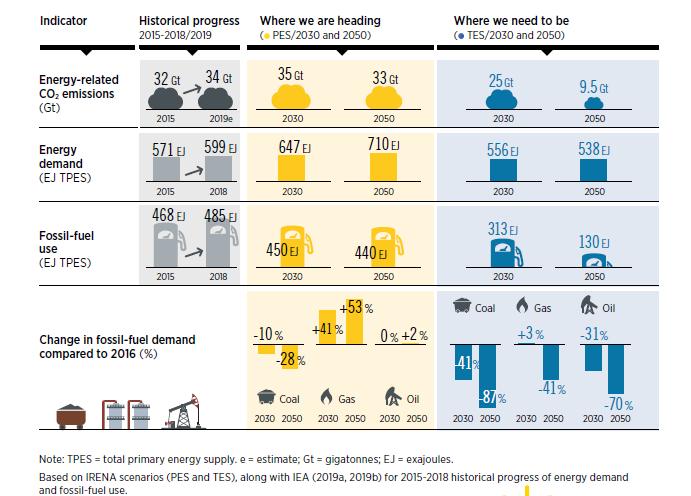
Energy-related CO2 emissions, energy demand and fossil-fuel outlook. Source: IRENA 2020
Finally, the latest Intergovernmental Panel on Climate Change (IPCC) Report, released on August 9, 2021 indicated that many of the changes observed in the climate are unprecedented in thousands, if not hundreds of thousands of years, and some of the changes already set in motion, such as continued sea level rise are irreversible over hundreds to thousands of years. The report also showed that there is a high chance now of crossing the global warming level of 1.5°C in the next decades, and that unless there are immediate, rapid and large-scale reductions in greenhouse gas emissions, limiting warming to close to 1.5°C or even 2°C will be beyond reach. The IPCC report also showed that climate change is already affecting every region on Earth, in multiple ways, and that in the coming decades climate changes will increase in all regions. For 1.5°C of global warming, there will be increasing heat waves, longer warm seasons, and shorter cold seasons. At 2°C of global warming, heat extremes would more often reach critical tolerance thresholds for agriculture and health The report added that climate change will cause multiple different changes in different regions such as changes to wetness and dryness, to winds, snow and ice, coastal areas and oceans. For example, Coastal areas will see continued sea level rise throughout the 21st century, contributing to more frequent and severe coastal flooding in low-lying areas and coastal erosion. Extreme sea level events that previously occurred once in 100 years could happen every year by the end of this century. The report finally showed that human actions had to be curtailed if the world must effectively slow down the impending danger, as carbon dioxide (CO2) continued to be the main driver of climate change, even as other greenhouse gases and air pollutants also affect the climate. Consequently, stabilizing the climate will require strong, rapid, and sustained reductions in greenhouse gas emissions, and reaching net zero CO2 emissions. Limiting other greenhouse gases and air pollutants, especially methane, could have benefits both for health and the climate (IPCC, 2021).
There is no doubt that the Petroleum Industry is facing a serious existential threat for the first time in its more than a century of existence, due to greenhouse gas emissions from fossil fuel. The threat has also taken the form of public oppositions and protects, and of recent even at the board room by skeptical shareholders, and challenges from policy makers, who are all seeking to simultaneously meet decarbonization goals and expected oil and gas demand. Recently, the Royal Dutch Shell plc (Shell) got a ruling against it by the District Court in The Hague, in May 2021, that Shell must reduce its global net carbon emissions by 45% by 2030 compared to 2019 levels. (Shell, 2021). Another landmark citizen victory came through when a small Hedge Fund Company, Engine No 1, voted our two of Exxon Mobil‟s Board members and replaced them with their members, and event that took place literally on the same day that the Court in Netherland gave the verdict against Shell. (Hiller & Herbst-bayliss, 2021). However, regardless of these threats, oil and gas would
International Journal of Engineering Research and Reviews ISSN 2348-697X (Online)
Vol. 10, Issue 1, pp: (14-30), Month: January - March 2022, Available at: www.researchpublish.com
remain an important part of the energy mix, especially as companies focus on aggressive decarbonization in the industry This is in addition to the fact that despite renewable‟s comparative advantages, it faces challenges in energy storage and intermittency of supply, and the reason why oil and gas will continue to be a key part in the energy mix as it provides the energy shortfall from renewable sources for some to come. There is no doubt however, that Natural gas would become a transition fuel especially in the United States, India, and China who are the three largest greenhouse gas emitters (Johnson etal 2020). Besides the use of natural gas as a transition fuel, the world will also continue to rely on raw materials and intermediates from oil and gas in the global manufacturing and chemical industries, such as in the petrochemical In its contribution to the net zero energy transition discourse, Shell undertook a rigorous simulation tagged “SKY” in which it recommended a complete re-wiring of the global economy in just 50 years, with 2070 as its “proverbial net-zero-emission date”. The report showed that oil, coal and gas will continue to be relevant even in 2070, in the global energy mix. While renewable energy may surpass fossil fuels for electricity generation shortly after 2030, and remain dominant through the 2050s, the report further showed that renewable can only contribute 60% of the electricity requirement by the end of the century, with the remaining 40% coming in the form of hydrogen and hydrocarbon fuels, such as petrol. Though the demand for fossil fuels declines in Sky as shown in figure 9, yet still in 2100, industry will use some fossil fuels for processes requiring intense heat and the transport sector will still seek the high energy density of hydrocarbon fuels to power some ships and planes. Although, a portion of these fuels are synthesized or manufactured from sustainably grown biomass. Also, besides, its contribution to electricity, oil or gas based feedstocks are also required to supply a growing chemicals industry.
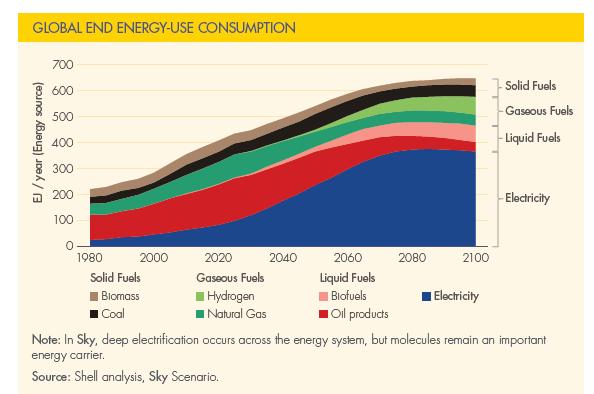
The Sky scenarios envisaged that in theory and perhaps in practice, full energy transition can only happen sometime in the 22nd century At that time, electricity could, in theory, be used to make hydrogen via electrolysis of water and carbon could be extracted from the oceans or atmosphere as carbon dioxide. Combining these could make any hydrocarbon material, from fuels for planes to plastics for consumer goods. According to the Sky scenario, some of these synthetic routes will begin to emerge in the second half of the century, even though it would take significant amount of time for these new industries to grow and compete. This is because, they do not exist now, although the chemistry on which they would be built is well understood and used in other ways. In summary, the Sky opined that society may eventually achieve a world where everything is renewable, but it is an unlikely outcome for the 21st century alone. (Shell)
Substantial evidence thus abounds to show that fossil fuels, especially, oil and gas will continue to play strategic role in the global energy mix in several decades to come. It is also true that the future is guaranteed for the engineers and other stakeholders in the sector. However, we cannot downplay the impact of the energy transition on the industry and its discipline petroleum engineers, who must also, transition in the same trajectory to making itself more relevant in the energy transition phase. (Caruna, 2021). Petroleum Engineers therefore will be at the forefront of ensuring new wells are responsibly located and rely on the most energy-efficient techniques to harvest resources. Many major oil and gas companies recognize the need to sustain oil and gas production in the foreseeable future to fill the world‟s energy needs. They would like to use environmentally friendly and sustainable technologies to produce these hydrocarbons. While producing the needed hydrocarbons, oil companies recognize the need to reduce their carbon
International Journal of Engineering Research and Reviews ISSN 2348-697X (Online)
Vol. 10, Issue 1, pp: (14-30), Month: January - March 2022, Available at: www.researchpublish.com
footprint. For example, ExxonMobil said it would spend $3 billion to cut emissions over the next five years, much of it on technology designed to capture carbon dioxide (CO2) before it gets to the atmosphere. And BP and Royal Dutch Shell have each promised to be net-zero emission from production by 2050. (University of Tulsa (2021). Petroleum engineers can also easily become geothermal engineers where they will deploy the same engineering application as for conventional oil and gas fields, to design, and drilling deep geothermal wells to reach fluids above boiling, at supercritical temperatures, to harvest the heat. Given that natural gas will continue to be a transition fuel, petroleum engineering will continue to be useful in the prospecting and development of the vast natural gas reservoirs. Also, since natural is also the feedstock for the production hydrogen, another alternative fuel, petroleum engineers will be involved not only in the drilling and production of the natural gas, but also in entire process of hydrogen production and transportation to reduce greenhouse-gases (GHG) production and improve energy storage. (Kamal, 2021).
One of the critical roles of Petroleum Engineers in the energy transition is to reduce CO2 emission through the decarbonization process of carbon capture and storage process Carbon capture, utilization, and storage (CCUS) is the only group of technologies that contributes both to directly reducing emissions in critical economic sectors and to removing CO2 to balance emissions that cannot be avoided, a balance that is at the heart of net-zero emission goals. Technically, while CO2 can be captured from a range of sources – including from fossil- and biomass-based power generation, industrial processes and directly from the air, to permanently store the captured CO2 is the essential enabler of large-scale emissions reductions. The need for CO2 storage would therefore grow from the current 40 Mt/year to more than 5000 Mt/year by mid-century. Carbon management services, such as in transporting and storing CO2 in large quantities would become a global industry supporting emissions reductions across multiple parts of the energy system. CO2 can be stored in deep geological formations in a process that mimics how oil and gas have been trapped underground for millions of years. Captured CO2 is compressed and injected deep into a reservoir rock overlain with a cap-rock, to avoid migration to the surface. Several types of reservoirs are suitable for CO2 storage, with deep saline formations and depleted oil and gas reservoirs having the largest capacity. (Malischek and McCulloch, 2021). This is where petroleum engineers need to deploy the same skills used in identifying oil and gas sites, drilling wells, putting in production systems and pipeline networks, to effectively reinject CO2 into underground reservoirs. (Pozniak, 2021).
According to Malischek and McCulloch, 2021, the first large-scale CO2 capture and injection project with dedicated CO2 storage and monitoring was commissioned at the Sleipner offshore gas field in Norway in 1996. The project has now stored more than 20 Mt of CO2 in a deep saline formation, equivalent to taking around 4.3 million passenger vehicles off the road for one year. A further project in Norway (Snøhvit) and projects in Canada (Quest), the United States (Illinois Industrial) and Australia (Gorgon) have increased storage capacity to around 8 Mt per year. Operators of oilfields use and incidentally store a further 34 Mt of CO2 through enhanced oil recovery. Also, according to Kamal, 2021, that although not initially set up to save the planet, more than 100 CO2 projects are currently in the Permian Basin and Gulf Coast of the United States, and according to the US Bureau of Ocean Energy Management, only 3–4% of potential US CO2 sites are currently under flood while remaining sites are awaiting CO2. The CO2 volumes injected are in the same order of magnitude that the Paris Climate agreement said is needed to store CO2 over the next 20 years. Designing and implementing CO2 injection is of course the exclusive terrain of petroleum engineering. (Kamal, 2021). Finally, as climate problems escalate with increasing global temperatures, one of the challenges the world would face shortly is water shortage, and this is also where petroleum engineering with their extensive drilling and completion and production expertise will be needed to drill very deep wellbores to locate underground aquifers from which fresh water can be produced and piped. (Kamal, 2021).
As the oil and gas industry becomes increasingly complex, the requirements for petroleum engineers and petroleum engineering education must also adapt to the changing landscape. The petroleum engineer, starting from today, must come to terms with the realities and challenges of the global energy transition. The Industry, and the Petroleum engineering programmes will require new competencies to develop cleaner production processes, and to take advantage of existing more environmentally friendly energies to create symbiosis capable of improving GHG emissions at a reasonable price. Many of these new competencies will be required through the different energy sources. Also, certain roles and skills will become less frequently required when being displaced by computer applications or by other more modern tools or technologies. By 2022 the industry will increase the recruitment for new job profiles up to 10% and decrease the hiring of some of the more traditional profiles from 27% to 24% as shown in table (Passalacqua, and Alsaba, (2020)
International Journal of Engineering Research and Reviews ISSN 2348-697X (Online)
Vol. 10, Issue 1, pp: (14-30), Month: January - March 2022, Available at: www.researchpublish.com
Table 2: Hiring trends for some roles in the energy industry between 2013 and 2017.
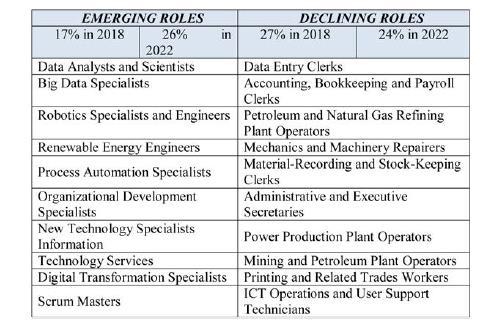
Source: Future of Jobs Survey, 2018, World Economic Forum. Must thus focus on how to produce oil and gas with minimal greenhouse gas emissions into the atmosphere in order to be sustainable within the energy transition. However, the good news is that, though the demand for crude oil may be declining with time, that of Natural gas, which is the cleanest of all the hydrocarbon energy sources with the lowest carbon-to-hydrogen ratio, will become a major transition fuel for the global economy. As mentioned in earlier sections, AI-based products and services can, and will, greatly leverage the skills of petroleum engineers in their work, through augmentation. Given the highly dynamic environment of technical operations in the sector, only 20-25% of the activities in the industry can be automated, while a high as 70-75% of those same operations can be augmented. (Mathieson et al, 2019). The petroleum engineer will also benefit from such emerging technologies as extended reality, and deep learning, to created augmented realities in the workplace. Collectively, these advanced technologies should enable one engineer to do the conventional work of many and, in fact, do more than the engineers that were displaced, as in reality, many engineers will be displaced unless they quickly adapt to these technologies.
According to Mathieson etal, 2019, digitization will enhance the efficiency of every aspect of the industry, and the profession, for instance waterflood and EOR project surveillance efforts that would naturally require several team efforts to pore over massive amounts of data at the pattern and fault block levels, can with digitization, tie these data into simulation models, along with production log data and myriad test information could lead to various efforts to increase recovery and lower costs. The good news is that today‟s engineering students know that the world is changing and are therefore also becoming more digitally savvy than their predecessors Feder, 2019 added that engineering graduates of today would be expected to be adept in data analytics, machine learning, and data sciences and to understand concepts such as cyber security and physical security. In addition to inserting digitalization, automation, and information technologies into their curricula, many engineering schools are also using these technologies to enhance the efficiency and effectiveness of teaching.
Besides AIs, information technology, and data analytics, the petroleum engineering curricula should also diversified to include, environmental, social, and corporate governance (ESG) courses as well. This approach focuses on holistic applications and the need for qualified candidates in the entire areas of sustainability, energy transformation, and economic growth. (Jozwiakowski, 2021). It is therefore important that Petroleum Engineering curricular, also pay special attention to the 17 United Nations Sustainable Development (SD) goals, with emphasis on the following 4 goals: (i) SDG #7: Affordable and Clean Energy; (ii) SDG #13: Climate Action on Greenhouse Gas (GHG) Emissions; (iii) SDG #14, #15: Life Below Water, and On Land, and (iv) SDG #6: Clean Water and Sanitation. Petroleum engineering graduates must be equipped with these sustainable development goals, given the increasing pressure from shareholders and institutional investors for oil and gas companies to comply with emission requirements. Companies are now under pressure to develop voluntary, consistent climate-related financial risk disclosures by investors, lenders, insurers, and other stakeholders. Sustainability considerations are now very central to oil and gas investment decisions, and to attract required investments essential to our industry a set of skills and ability will be required to translate the business model and step-change improvements across every aspect of the oil and gas value chain to meet the sustainability requirements Besides, these sustainability requirements for investment, there is also the issue of carbon emission tax, that
International Journal of Engineering Research and Reviews ISSN 2348-697X (Online)
Vol. 10, Issue 1, pp: (14-30), Month: January - March 2022, Available at: www.researchpublish.com
has become another burden as according to the World Bank, about 20% of global emissions are currently subject to carbon pricing regulation, ranging from $1 to $139/tCO2e with an average of $7/tCO2e. This has made E&P companies to increasingly apply a cost to their future CO2e emissions in order to factor as part of its project economics. (Capello et al, 2020).
Though not exactly a carbon tax, Nigeria also penalizes gas flare where companies producing more than 10,000 bopd are required to pay $2 per thousand standard cubit feet of gas flared, and those producing less that 10,000 bopd to pay $0.5 per thousand standard cubit feet of gas flared in Nigerian operations. There is also a mandatory fee of $2.5 per thousand standard cubit feet of gas for any company that fails to report accurately on flared gas, or hinder access to flare site or fails to install proper metering system. (Flare Gas Prevention of Waste and Pollution, 2018). While these penalties are not rigorously enforced in Nigeria, the Nigerian government may at some point be compelled to pay carbon emission tax for their crude oil export, as a measure of proper housekeeping in the local industry. Companies operating in Nigeria must therefore begin to factor in these taxes as part of the total project costs. Considering the impact of such taxation or penalty, oil companies must become critical towards reducing emissions into the atmosphere, and this is also where Petroleum Engineers are needed to lead in the drive for more sustainable development of oil and gas Petroleum Engineers will work to ensure both design and operating efficiencies of the entire hydrocarbon process or system, to drastically reduce gas flares, or other hydrocarbon leakages into the atmosphere. (Capello et al, 2020). It is therefore imperative that Future petroleum engineers also begin to see themselves as environmental engineers especially in their approach in unlocking vast hydrocarbon reserves while doing it with lesser carbon footprints and protecting the environment. (Ighalo etal, 2020).
Petroleum engineers must also be grounded in key topics such as business, sustainability, and communications to be able to adjust and adapt easily in the global marketplace. (Feder, 2019). Such adaptation can help a reservoir engineer to transition into investment banking, with requisite experience in property evaluation and reserve reporting (which includes cash flow modeling), mergers and acquisitions and basic financial modeling, all of which are essential skills of an investment banker (Ighalo et al 2020).
Finally, as computing resources become increasingly accessible, there is a growing resource base for petroleum engineers to develop their skills and become "digital citizens" with an understanding of the new powerful tools available to them and how they can be applied to meet the challenges of our industry (Mathieson et al, 2019).
While the future of energy, and a very long future indeed, is green, oil and gas will continue to be relevant in the energy mix. Regardless, petroleum engineering, and the industry at large must need to continuously re-invent itself to continue to not only to energy production, but many aspects of daily life. Also, in terms of petroleum derivatives, the alternative products are yet to attain sufficient maturity for sustained large-scale utilisation. Also, in principle, the breadth and depth of challenges that renewable energies faces suggest that the world's dependence on oil and gas is not likely to shift dramatically in the next couple of decades. The Oil and Gas Industry must be innovative in order to adapt to the changing energy landscape, to become relevant in the global energy mix and energy transition, and to achieve this, would require a symbiotic relationship between the industry and the academia There is also need for the academia to also have a strong network and bonding with its Alumni Bodies to provide the needed bridge between the Universities and the Global Energy World.
Suffice to say at this point that there is no cause for Panic, as Petroleum Engineering will survive the ongoing energy transition and will come out better and more agile for future generations.
[1] Adeyemo, O.K (): The Role of Alumni Association in Social & Educational Development, University of Ibadan.
[2] Ali, U (2019): The history of the oil and gas industry from 347 AD to today, https://www.offshoretechnology.com/comment/history-oil-gas/.
[3] Baker, D (2019): Digital Technology Trends in the Oil and Gas Industry. https://www.geoexpro.com/articles/2019/07/digital-technology-trends-in-the-oil-and-gas-industry,
[4] Capello, M.A., Etkind, J and Rousset, F (2020): A Petroleum Engineer‟s Role in Reducing Carbon Emissions https://jpt.spe.org/petroleum-engineers-role-reducing-carbon-emissions
International Journal of Engineering Research and Reviews ISSN 2348-697X (Online) Vol. 10, Issue 1, pp: (14-30), Month: January - March 2022, Available at: www.researchpublish.com
[5] Caruana, C.M (2021): The Death of Petroleum Engineering… is an Exaggeration, Claudia M. CaruanaMay 5, 2021, https://oilmanmagazine.com/article/the-death-of-petroleum-engineering-is-an-exaggeration/
[6] Dibiamaka, I.S and Olafinhan, B.K (2019): Petroleum Engineering Education in Nigeria: Development, Challenges and Prospects International Journal of Petroleum and Petrochemical Engineering (IJPPE), Volume 5, Issue 1, 2019, PP 24-29, https://www.arcjournals.org/pdfs/ijppe/v5-i1/4.pdf
[7] Feder, J (2019): As Industry Changes, So Does Petroleum Engineering Education https://jpt.spe.org/industry-changes-sodoes-petroleum-engineering-education, Journal of Petroleum Technology,
[8] Flare Gas (Prevention of Waste and Pollution), 2018, Part III and IV
[9] Global Catholic Climate Movement, 2017: Why is the energy transition crucial? Why must we transition away from fossil fuels and the economy of extraction? https://catholicclimatemovement.global/why-is-the-energy-transitioncrucial-why-must-we-transition-away-from-fossil-fuels-and-the-economy-of-extraction
[10] Guterres, A (2020):Carbon Neutrality by 2050: The World‟s Most Urgent Mission, https://www.un.org/sg/en/content/sg/articles/2020-12-11/carbon-neutrality-2050-theworld%E2%80%99s-mosturgent-mission
[11] Guterres, A (2021): World on the verge of climate „abyss‟, as temperature rise continues: https://news.un.org/en/story/2021/04/1090072,
[12] Hiller, J and Herbst-bayliss, S (2021): Exxon loses board seats to activist hedge fund in landmark climate vote, Jennifer Hiller and Svea Herbst-bayliss, May 27, 2021, https://www.reuters.com/business/sustainablebusiness/shareholder-activism-reaches-milestone-exxon-board-vote-nears-end-2021-05-26/
[13] Honeycutt, B, D. and McLeroy, P, G (2018): Petroleum engineering https://www.britannica.com/technology/petroleum-engineering,.. "". Encyclopedia Britannica, 16 Feb. 2018, https://www.britanni, ca.com/technology/petroleum-engineering. Accessed 7 August 2021.
[14] Ighalo, S., Michael, A and Blaney, J (2020): The True Market Value of a Good Petroleum Engineer https://jpt.spe.org/twa/true-market-value-good-petroleum-engineer
[15] IPCC (2021): Press Release on Climate change widespread, rapid, and intensifying https://www.ipcc.ch/site/assets/uploads/2021/08/IPCC_WGI-AR6-Press-Release_en.pdf, IPCC, 2021/17/PR,
[16] IRENA (2020), Global Renewables Outlook: Energy transformation 2050, (Edition: 2020), International Renewable Energy Agency, Abu Dhabi. ISBN 978-92-9260-238-3,
[17] i-SCOOP (2021): Industry 4.0: the fourth industrial revolution – guide to Industrie 4.0 https://www.iscoop.eu/industry-4-0/
[18] Johnson, R.J., Blakemore, R and Bell, R (2020): THE ROLE OF OIL AND GAS COMPANIES IN THE ENERGY TRANSITION Atlantic Council, 2020. https://www.atlanticcouncil.org/in-depth-research-reports/report/the-role-ofoil-and-gas-companies-in-the-energy-transition/
[19] Jozwiakowski, M (2019): Is Petroleum Engineering Training Keeping Up with the Times?, https://www.rigzone.com/news/is_petroleum_engineering_training_keeping_up_with_the_times-28-jul-2021166034-article/
[20] JPT (2020): Synergistic Collaboration Between Industry, Academia, and Associations https://jpt.spe.org/synergisticcollaboration-between-industry-academia-and-associations, Journal of Petroleum Technology
[21] Kamal, M.M (2021): The Future Need for Petroleum Engineering,https://jpt.spe.org/the-future-need-for-petroleumengineering, Journal of Petroleum Technology
[22] Macini and Mesini, (): History of Petroleum and Petroleum Engineering. Encyclopedia of Life Support Systems (EOLSS), https://www.eolss.net/sample-chapters/C08/E6-193-24.pdf
[23] Malischek, R and McCulloch, S (2021): The world has vast capacity to store CO2: Net zero means we‟ll need it, https://www.iea.org/commentaries/the-world-has-vast-capacity-to-store-co2-net-zero-means-we-ll-need-it
[24] Marr, B (2019): What Is Extended Reality Technology? A Simple Explanation For Anyone https://www.forbes.com/sites/bernardmarr/2019/08/12/what-is-extended-reality-technology-a-simple-explanationfor-anyone/?sh=4ee9fc697249
International Journal of Engineering Research and Reviews ISSN 2348-697X (Online) Vol. 10, Issue 1, pp: (14-30), Month: January - March 2022, Available at: www.researchpublish.com
[25] Mathieson, D., Meehan, D.N and Potts, J (2019): The End of Petroleum Engineering as We Know It, https://www.researchgate.net/publication/331725301, Society of Petroleum Engineers
[26] Michael, A (2018): The State of Petroleum Engineering Academia in Its Post-Centennial Years, https://jpt.spe.org/twa/statepetroleum-engineering-academia-its-post-centennial-years
[27] Michael, A., Srivastava, A., Garg, L., and Harkouss, R (2020): End-to-End Digital Transformation of Petroleum Engineering: The Evolution of a Revolution, The Way Ahead, https://jpt.spe.org/twa/end-end-digital-transformationpetroleum-engineering-evolution-revolution
[28] Nakhle, C (2018): Technological Innovation Creates New Opportunities in Oil & Gas, https://www.crystolenergy.com/technological-innovation-creates-new-opportunities-in-oil-gas/
[29] Oracle, 2021: What is Machine Learning? https://www.oracle.com/ng/data-science/machine-learning/what-ismachine-learning/2021
[30] Passalacqua, H and Alsaba, M.T, A (2020): Energy Transitions: An Academia Take on Shaping the Future Professionals of Oil and Gas, SPE-201593-MS
[31] Pozniak, H (2021): The energy transition: how to bridge the skills gap, https://eandt.theiet.org/content/articles/2021/01/the-energy-transition-how-to-bridge-the-skills-gap/
[32] Ranganathan, A (2017): How Augmented and Virtual Reality is helping Oil & Gas companies, Arunkumar Ranganathan, Jul 31, 2017. https://energy.economictimes.indiatimes.com/energy-speak/how-augmented-and-virtualreality-is-helping-oil-gas-companies/2514
[33] Shell (2021): Shell confirms decision to appeal court ruling in Netherlands climate casehttps://www.shell.com/media/news-and-media-releases/2021/shell-confirms-decision-to-appeal-court-ruling-innetherlands-climate-case.html, Jul 20, 2021.
[34] Shell () Could Renewable Energy completely replace fossil fuels?, https://www.shell.com/energy-andinnovation/the-energy-future/scenarios/shell-scenario-sky/could-society-reach-the-goals-of-the-paris-agreement/canrenewables-replace-fossil-fuels.html
[35] Shell (2018): Shell Scenarios, Sky, Meeting the Goals of Paris Agreement: Overview
[36] Sovacool, B.K (2017): The History and Politics of Energy Transitions Comparing Contested Views and Finding Common Ground, In:
[37] Arent D., Arndt, C, Miller M., Trap, F., and Zinaman, O (2017): The Political Economy of Clean Energy Transition, Chapter 2, University of Oxford Press. Online, https://oxford.universitypressscholarship.com/view/10.1093/oso/ 9780198802242.001.0001/oso-9780198802242-chapter-2
[38] SPE (2021): (PETROLEUM TECHNOLOGY TIMELINE, HTTPS://WWW.SPE.ORG/EN/INDUSTRY/HISTORY
[39] Tulankar, S., Grampurohit, B and Arya, R (2020): Role of alumni as stakeholders in enhancing quality education. https://www.researchgate.net/publication/341650267_Role_of_alumni_as_stakeholders_in_enhancing_quality_educ ation
[40] Uhi, A.E (1965): Petroleum Engineering Education, the First Half Century, (JOURNAL-OF PETROLEUM TECHNOLOGY, APRIL 1965; https://onepetro.org/JPT/article/17/04/377/162523/Petroleum-EngineeringEducation-The-First-Half
[41] University of Tulsa (2021): Create a sustainable future with a petroleum engineering degree https://engineering.utulsa.edu/petroleum-engineering-sustainable-energy/
[42] USA Library of Congress (2021):.Oil and Gas Industry: A Research Guide, https://guides.loc.gov/oil-and-gasindustry/history
[43] WhiteHouse (2021): Leaders Summit on Climate Summary of Proceedings. https://www.whitehouse.gov/briefingroom/statements-releases/2021/04/23/leaders-summit-on-climate-summary-of-proceedings/
[44] Yale Environment 360, (2020): Extreme Weather Events have increased significantly in the last 20 years. Yale School of the Environment https://e360.yale.edu/digest/extreme-weather-events-have-increased-significantly-in-thelast-20-years